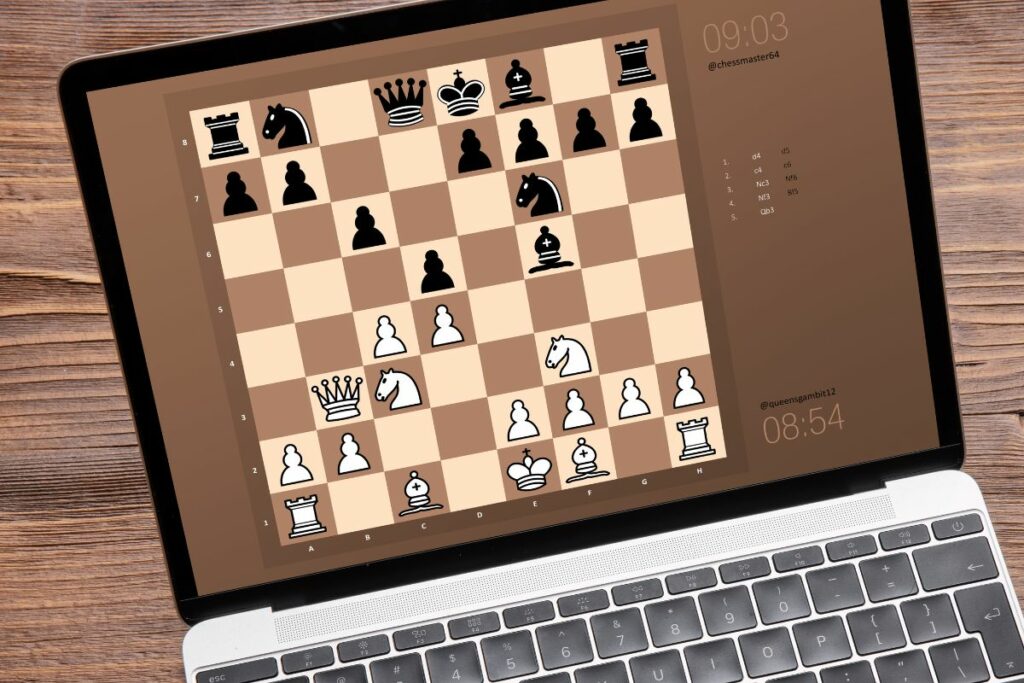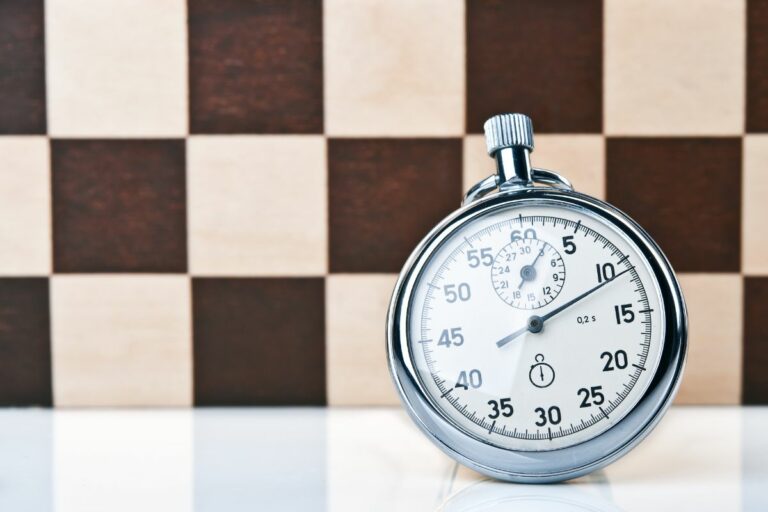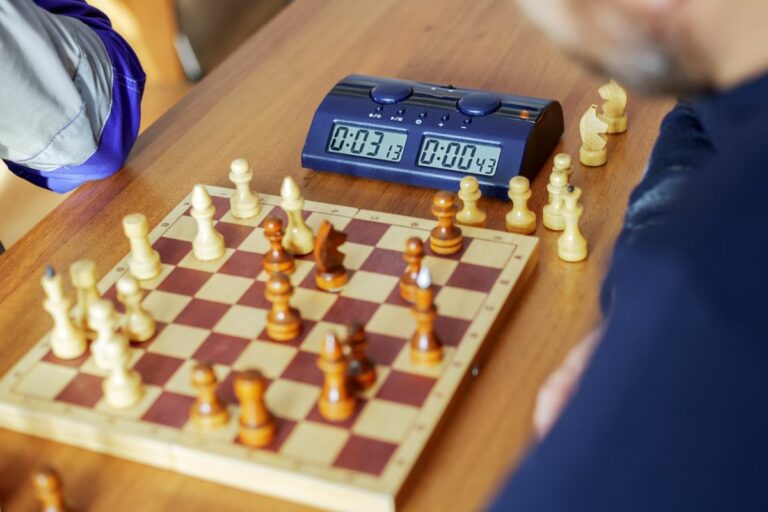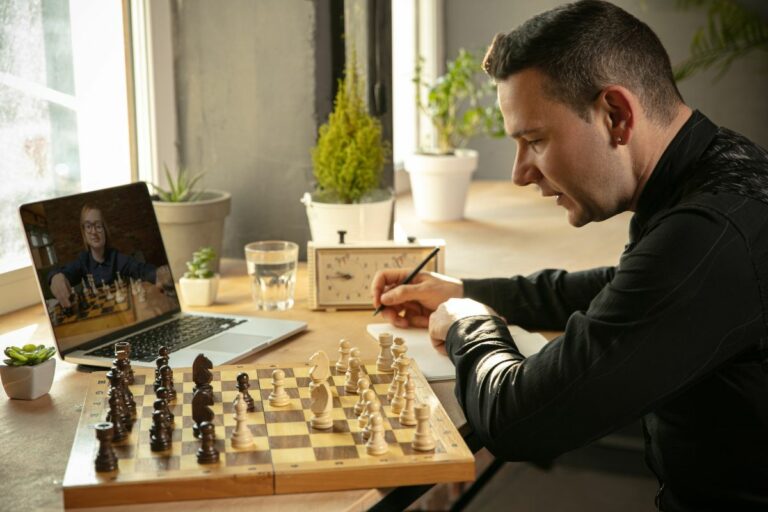How to Get a Chess Rating? The Ultimate Simple Guide You Need
If you are new to chess, you will often hear players talk about their ratings, and you will find that most of them don’t really take unrated players seriously until they get a rating.
In the world of chess, a numeric representation of a player’s skill and expertise, known as the chess rating, stands as a testament to their prowess on the sixty-four squares. This is why getting a rating is important for any new chess player that wants to take the game seriously.
But, how to get a chess rating?
To get a chess rating, you need to play in accredited chess tournaments. FIDE or USCF can organize these tournaments. For no more than 26 months, players must compete against at least five rated chess players and earn at least half of a point against each of them. The initial rating is made public only when it is 1000 or higher.
This is the very short, very simple version. But given how there are different chess entities out there that have different rules, things are a bit more complicated than that.
Keep reading to learn more about chess ratings and the steps you need to take to earn one.
How to Get a Chess Rating?

Chess ratings are important because they represent how well a player is doing. Also, one of the requirements for participating in some of the more prestigious chess tournaments is your chess rating.
Organizations like the International Chess Federation (FIDE) and the US Chess Federation (USCF or US Chess) assign ratings to chess players. Ratings are updated following tournaments based on your performance in the tournament.
When you register as a player with a chess governing organization like FIDE or your national governing body connected with FIDE like the USCF, you will immediately start on your journey to earn a rating. How long it takes you to earn a rating will depend mainly on how well you perform against other rated players in accredited tournaments.
Your rating will always fluctuate depending on how you do compared to other rated players.
Below is an explanation of the sample ratings and how they normally correspond to your chess skills:
| Category | Rating points |
| Novices | > 1200 |
| Class D | 1200-1400 |
| Class C | 1400-1600 |
| Class B | 1600-1800 |
| Class A | 1800-2000 |
| Candidate Masters | 2000-2200 |
| FIDE Candidate Masters | 2200-2300 |
| Grandmasters | 2500-2700 |
| Super Grandmasters | +2700 |
For players, ratings are a big deal because they determine the pairings. They accurately reflect the players’ current playing abilities and provide information on the tournaments in which they will be allowed to compete.
How to Get a FIDE ELO Rating?

Let’s not beat around the bush here, a FIDE rating is the most important rating system out there. Whenever anyone talks about their rating, they are talking about their FIDE Elo rating unless they mention otherwise specifically.
That’s why you really should work on getting your FIDE rating as soon as you decide to get serious about chess, so let’s quickly see how you can do that;
Get Registered
You must first register with the chess federation of your country, which you may accomplish by going to their official website or you will get registered by the tournament organizers or arbiters once you join one.
After enrolling, you will receive your special FIDE ID, and you may participate in tournaments with a FIDE rating.

Each player who competes in chess tournaments with FIDE ratings is given a unique number called a FIDE Id.
After providing the required information, one can obtain the FIDE ID by contacting the rating officer of their federation. Your name, gender, birth date, email address, and current photo may all be required information.
Your FIDE ID and rating don’t expire. Once you successfully fill out the information needed and register online, your ID is valid for life. This ID represents you as a unique chess player. It won’t be shown, though, if you’ve never participated in a FIDE-rated match and/or haven’t added it to your profile online.
Stay Alert for Tournaments
Pay attention to the FIDE website, the official national chess federation website, or the social media platforms of the country where you live. From there, find the rated chess tournaments. Make sure to participate in tournaments that are labeled “ranked.”
You can inquire about the tournament brochure by contacting the tournament organizer through email (which will typically be provided) or by using another method. You will have a clear understanding of the entry fees, costs, age categories that can participate in the competition, and other details once you have the tournament brochure in your possession.
Learn Tournament Rules
Before you participate in tournaments, you have to be familiar with their rules. Unlike in friendly matches, the “touch move” regulation must be carefully adhered to. Different tournament formats exist, including Round-robin, the Swiss system, Elimination, and others.
Similarly, there are many time control systems, including blitz, standard, and compensation. You will also need to learn chess annotations as it’s mandatory to record your games and have the scoresheet signed after each game in ranked chess tournaments.
Start Getting Your Rating
To receive a FIDE rating, you need to compete against at least five FIDE-rated opponents and win at least half of their games for a maximum of 26 months.
It should be noted that you are not required to play against all five rated chess players in a single-rated tournament in accordance with FIDE rating criteria. Additionally, the initial rating is only made public if it is 1000 or higher.
Keep in mind that you will not encounter rated opponents in the first round of any FIDE-ranked tournament. Some will have ratings, while others won’t. You will only receive your rating if you play against other rated chess players.
How much does it cost to get a FIDE rating?
There are no fees to getting a FIDE rating.
The different FIDE ratings
As you can see in the screenshot of Magnus’s account above, there are three different FIDE ratings you can get. The rules mentioned above apply for all of them, but each of these three ratings are applied only to games played with a specific time control.
The three chess ratings are:
- Standard; for classical games (Long games of 90+ minutes of time for each side (+ increment or without)
- Rapid: For Rapid games (shorter games of 20-30 minutes of time for each side (+ increment or without)
- Blitz: For Blitz Games (Even shorter games of 3-5 minutes of time for each side (+ increment or without)
You can learn about these chess matches time controls here.
How to Get a USCF Rating?

The USCF has its own rating system as well, and if you live in the US or planning to play chess there, you will need to get one.
The rating system is utilized all across the country and is known as USCF (United State Chess Federation). You must be a member of USCF in order to compete in USCF-rated competitions. Receiving the titles of National Master and Grandmaster requires a USCF rating.
The USCF rating system, a popular variant of the even more popular ELO system in which the K-factor fluctuates and awards additional points for high-quality playing in a tournament, is used by the United States Chess Federation (USCF). Generally speaking, USCF ratings are 50 to 100 points higher than FIDE equivalents.
| Category | Rating points |
| Class J | 100-199 |
| Class I | 200-399 |
| Class H | 400-599 |
| Class G | 600-799 |
| Class F | 800-999 |
| Class E | 1000-1199 |
| Class D | 1200-1399 |
| Class C | 1400-1599 |
| Class B | 1600-1799 |
| Class A | 1800-1999 |
| Expert | 2000-2199 |
| National Master | 2200-2399 |
| Senior Master | +2400 |
The steps of getting a USCF rating don’t differ a lot from the FIDE one. Similar to FIDE, you have to play over-the-board tournaments to obtain an official rating.
Your rating is considered tentative before 26 games, and it will change greatly depending on whether you win or lose. It will then stabilize, at which point your rating will become official.
Over-the-board (OTB) chess rating in the USCF system has two distinct ratings; regular and “quick” ratings, while correspondence chess has just one rating system.
For tournaments with time limits of Game/5 to Game/29, quick ratings are employed, and for competitions with time limits of Game/30 or slower, regular ratings are computed. Both the quick and normal rating systems may be used to rate games with a time control of G/30 to G/60.
How Long Does It Take to Get a Chess Rating?
Although playing competitive chess can be challenging, it need not be impossible. You can aim for a wide range of classes and ratings.
Being a rated chess player is actually both easy and fast. There is only one way to get there; with well-played games and competitions, you can start out low and raise your rating over time.
The amount of time it takes to get to a certain rating depends on your age, how much time you spend training, your skill level, etc. To advance from a complete beginner to a FIDE-rated player often takes a couple of years.
You can learn more about what is considered to be a good chess rating here. I also have a guide on how to get past a certain rating that you also may find useful if you’re ever stuck.
How to Find FIDE-rated Tournaments Near You?
Here are a few ways to find FIDE-rated tournaments near you:
- You can find all the FIDE-rated tournaments near you by searching on their official website. You can select the country where you live and view all the upcoming tournaments near you. When you have chosen the tournament you wish to enter, click on it. A new page will open with information on that specific tournament and the administrator.
- Check with Local Chess Clubs: Contact chess clubs or organizations in your area and inquire about any upcoming tournaments. They often organize or have information about local events. You can search online or use directories to find chess clubs in your vicinity.
- Check your National Chess Federation Website: Visit the website of your country’s national chess federation or governing body. They typically maintain a calendar of official tournaments happening nationwide. Look for the tournament section or events calendar on their website for information on upcoming events.
- Online Chess Event Platforms: Explore online platforms dedicated to listing chess tournaments and events. Websites like Chess.com, lichess.org, and chess24.com have event sections where you can search for tournaments based on location, date, or tournament type. These platforms often include both online and offline (over-the-board) events.
- Social Media and Online Chess Communities: Join chess-related groups, forums, and social media communities. Platforms like Facebook, Reddit, or Discord have dedicated chess communities where you can interact with other chess enthusiasts. These communities often share information about local tournaments and events.
- Local Chess Magazines and Newspapers: Check local chess magazines or newspapers that cover chess-related news and events. They might feature upcoming tournaments or provide information on where to find more details.
- Contact Tournament Organizers: If you know of any specific tournament organizers in your area, reach out to them directly. They can provide information about their upcoming events or refer you to other organizers who are hosting tournaments.
- Reach out to friends: If you know any friends that regularly play chess, ask them to let you know about the next tournament. They probably already have a way of getting notified about local tournaments, and they can keep you in the loop. Don’t forget to remind them every few weeks, especially if your friends have the memory of a goldfish as my friends do.
After getting your rating and becoming a stronger chess player, you will find yourself wondering about those titles that the strongest chess players around have. Titles like GM, IM, and FM. To learn about that, check out my article on what are chess titles and how to get them here.
Online Chess Ratings; Do They Matter?

Online ratings are significant to players who only stick to this type of game. They are not interested in being compared to OTB players. Instead, they’re interested in online tournaments which have their own rating system.
Online chess websites that you use effectively assign ratings online. Even though they employ the ELO rating system, it differs from OTB ratings. The “actual” rating you receive is unaffected by them.
Can You Get an ELO Chess Rating Online?
Online chess games with ELO ratings are available for you to try. The most well-liked method is to use Chess.com. Playing rated games on Chess.com is simple; you only need to create a new challenge in the Live Chess area and enable the “Rated” checkbox.
To encourage competitiveness and simulate a real-life experience, many websites have their own ranking systems that allow players to watch their progress without ever leaving the comfort of their homes.
Can You Get a USCF Rating Online?
Most online chess websites apply the ELO system. However, the USCF is yet to start hosting online tournaments with official ratings. The US Chess Executive Board and the Ratings Committee approved the development of a regular rating system for online play in response to the rising demand for this type of play.
Your ELO online rating can be used to determine what the USCF rating would be. As a general rule, to get a USCF standard (non-rapid) rating, take the online rating from chess.com and deduct 800-900 points. Additionally, you can add 100–200 points to your chess.com blitz (5-minute) rating to obtain a USCF standard (non-rapid) rating.
If you did find this article helpful, please consider sharing, as it can help this little site grow 🙏







